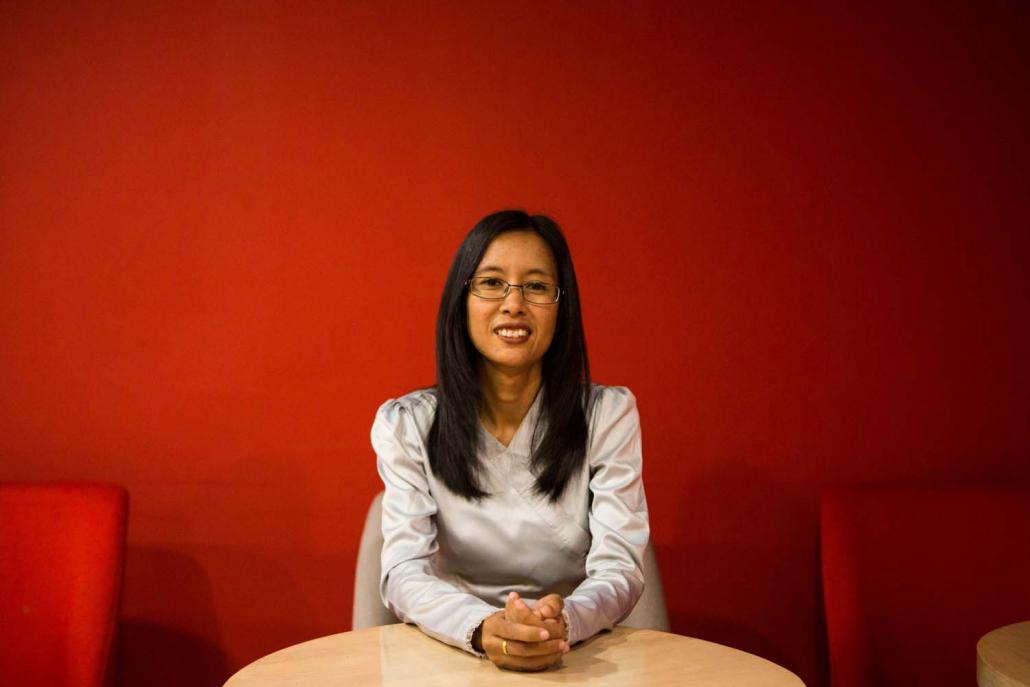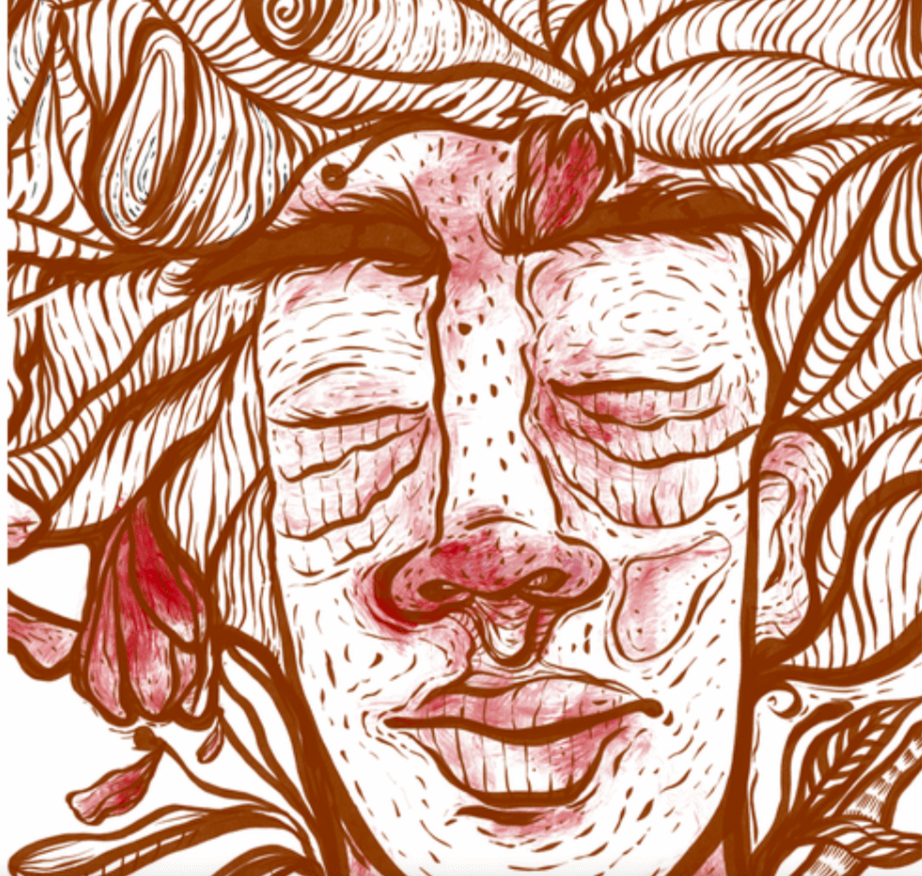(Photo: Frontier)
Rape, revenge and reactionary tales
A recently released Myanmar horror film is crassly misogynist in its portrayal of sexual violence, but is part of a much broader trend in an industry dominated by male filmmakers.
By Myint Myat Thu
What if Mya Mya, the lead character in the Myanmar horror film of the same name, released on 6 February were to enact revenge on the men who gang-raped her, not by menacing them as a forlorn ghost, but by seeking justice as a tenacious survivor?
For the moment, such a plot turn appears to be beyond the imagination of Myanmar filmmakers, who are virtually all male and prefer to portray women rape victims as either killed in the act or driven inexorably to suicide by the shame. Their death, after all, provides a handy motive for male lead characters to avenge them in thrilling feats of heroism.
One thing that saves the character of Mya Mya – a feisty Yangon factory worker and strike-organiser before her death – from further humiliation is that, while haunting the men who raped and murdered her, she does not do so half-naked, despite what the film’s titillating promotional poster might suggest. However, this is small consolation when the making of the film itself was a feat of sexual exploitation.
When the casting call for the three “rapist” roles was made last July on Facebook, many male users tagged their friends, saying with boorish humour that their friends would make good “rapists” and encouraging them to apply. Auditions for short-listed aspirants took place on 8 September in Yangon’s Kandawgyi Park in full view of the media and public.
“These films, which were all directed by men, purport to raise awareness about rape while actually denigrating the victims and depicting their abuse for entertainment.”
A video recording of the event uploaded to Facebook by Myanmar Online News shows one aspirant miming rape on a stage and shouting aggressively into a microphone. The celebrity model and actress Thinzar Wint Kyaw, who plays Mya Mya, is shown in the audience, laughing.
Just a few weeks before the film’s official release, the production posted on Facebook a grainy photo of a naked women’s torso, ostensibly that of Thinzar Wint Kyaw. The caption asked Facebook users to guess the body size of the famous model and actress. There were prizes, including gift cards for JCGV cinemas, for the winners.
However, behind all these vulgar trappings is an equally dubious origin story. The rape-revenge tale of Mya Mya was inspired by a viral Facebook video, uploaded in April last year. The video features a young woman employed in a Yangon factory who, the viewer is invited to believe, is being possessed by the ghost of Mya Mya, a raped and murdered factory worker.
In the four-minute video, filmed on a low-resolution phone camera, Mya Mya appears to speak through the possessed woman, pleading to a crowd of onlookers for her unreported rape and murder to be investigated. This prompted the police to actually open a case. However, no evidence has since emerged to prove that Mya Mya ever existed. With the cinematic version of Mya Mya, production company Night School aimed to extend the Mya Mya fantasy, feeding off the warped sense of reality created by social media.
The film’s portrayal of rape is sadly typical of the Myanmar film industry. Out of 96 Myanmar films released last year, six feature the rape of a woman as a prominent plot device. In all cases, the female victim is destroyed by the experience – either killed there and then or later driven by shame to suicide or a life of seclusion.
These films, which were all directed by men, purport to raise awareness about rape while actually denigrating the victims and depicting their abuse for entertainment.

“What is glaringly missing in all these films [featuring rape] is the solution,” Daw Swe Zin Nay Min, a physics teacher at a private school who doubles as an online film reviewer, told Frontier.
“There are some foreign films I’ve seen which depict rape, but they usually find ways [for characters] to overcome the experience. In Myanmar, though, films mostly focus on how, for example, a girl is driven to prostitution [after being raped] and is never able to escape or get through the trauma. Seeing [this] every time has left me suffocated.”
Swe Zin Nay Min doesn’t think rape should be forbidden territory for cinema. Instead she would like to see it treated appropriately as a subject, with the survivor as the master of her (or his) own fate. At the moment, these characters are effectively sacrificed, their destruction providing a motive for another, generally male, character to enact bloody revenge on their behalf and be crowned a hero because of it.
In last year’s Responsible Citizen, it is the discovery of the mutilated corpse of a raped supermodel that drives the “responsible” police officer to perform heroic feats. In A Little Daughter’s Village, also released last year, a young girl is raped seemingly in order, in plot terms, for a loving father to avenge his adopted daughter.
Much the same story is repeated in other films from last year, such as Box 88 and Hit Tine, except that the plot of the latter is designed to enshrine a mother’s vengeful love. Sometimes even a sister’s vengeful love takes centre stage, as in last year’s The Elite and the Fish Paste. The overwhelming majority of heroes in these revenge dramas are, however, men.
A Flower Above the Clouds performs better in its portrayal of a rape survivor. It tells the rag-to-riches story of a woman who was raped as a girl but, after years of seclusion in a convent, eventually becomes a famous singer. However, this rise, the film strongly implies, would not have happened without the support of the male lead character.
“I like this film and find it positive”, said Ko Sein Lyan, a filmmaker and on-set artistic director. “But I am worried that films like this could also misinform audiences, telling them that no matter how severely traumatised a woman might be, it can all vanish once she meets a man.”
Sein Lyan, who studied for a diploma in counselling psychology at the College of Allied Educators in Singapore, said there is a societal need for more empowering portrayals in Myanmar films of women who have traumatic sexual experiences. “What I’ve noticed in films here is that it is mostly men who make up the [support] circle of a woman with trauma,” he told Frontier. “There should be more women than men around her. Even if such an empowering society is not out there in reality, we need to create it in films.”
But for Mya Mya director U Nyo Min Lwin, these considerations are irrelevant to his film. On 7 February, he told the Let’s Talk TV programme on MRTV-4 that Mya Mya is not a “rape film” but a “ghost film”. But even if this distinction mattered, his ghost film is inordinately preoccupied with sexualising the main subject. Is a female ghost really more frightening for having left its earthly life after being raped and stabbed in the chest by three leering men?
Praising Thinzar Wint Kyaw’s acting ability, the director said in a filmed interview on 10 December last year with online outlet Myanmar Celebrity, “She could follow my directions very well during the film shooting. For example, I tried to make her scream while being raped by the second guy differently from the first one. She could embody this painfulness of [being raped by three different men] perfectly.”
“What if Mya Mya, the lead character of the Myanmar horror film of the same name (…) were to enact revenge on the men who gang-raped her, not by menacing them as a forlorn ghost, but by seeking justice as a tenacious survivor?”
Mya Mya could, in fact, have been much more effective as a “rape film” – one that explores how the woman survives and triumphs over her experience of sexual violence using her strength of character. But ultimately, the character is dumped in the same metaphorical grave as so many other raped female characters in Myanmar films over the last year.
Mya Mya is portrayed, while alive, as an intelligent and vigilant woman. She spearheads a wildcat strike of garment factory workers to call for their rights. It is this defiant act that enrages the factory boss, who later masterminds her assault. We see another sign of her resolve in her habit of keeping a knife under her pillow while she sleeps, to protect against a predatory step-father. A Mya Mya that survives her eventual assault only to wreak vengeance on the perpetrators would be a more terrifying spectacle than a pallid ghost.

It’s not like women meting out bloody violence is taboo in contemporary Myanmar cinema. In fact, it’s often portrayed in gratuitous ways. Daung Ni, the vengeful mother of Hit Tine, slashes the rapist of her daughter with a sword multiple times and then drags his bloody body down a busy road in broad daylight. In The Elite and the Fish Paste, Joe Joe, the elder sister of the victim, beats the rapist to death, though not before she hangs him upside down, ties his mouth with a sack full of mice around his neck and leaves them eating his head for several minutes.
Mya Mya, as a survivor, wouldn’t need to go to these extremes. Instead, she could ally herself with the law and seek justice in court. Given her confident and outspoken character, this would be an obvious choice. She is not the type to be easily driven to taking her own life out of shame, as with the characters in The Elite and the Fish Paste and Hit Tine.
After all, she would have recourse to a powerful weapon – the strong sisterhood she has formed with her colleagues at the factory, which has an overwhelmingly female workforce. But a courtroom drama with a rape survivor placed centre-stage is untested ground in Myanmar cinema. There are no excuses not to correct this.
However, Steel – the director of Responsible Citizen, The Elite and the Fish Paste and The Little Daughter’s Village, all of which have rape as central plot components – said the onerous regime for film censorship in Myanmar made it difficult to make courtroom dramas. He explained that the censor board was sensitive to the court system being mispresented or potentially defamed on screen, while caring much less about violence. “It often orders us to cut scenes connected with the law,” he said.
“We are left with only one option for rape films, and that is [for characters to] seek revenge,” he said, “But my characters also doubt they would get any justice through law.”
U Nyan Wint, the producer of Hit Tine, told Frontier it was accurate to portray rape survivors shunning the justice system. “From what I understand, women [bringing charges] usually lose in most rape cases in Myanmar,” he told Frontier. “[The process] demands that they explicitly describe their story in court. And to use the dirty language [of sex] could be even more shameful [than being raped] for a Myanmar girl.”
But Swe Zin Nay Min considers this just another feeble excuse made by filmmakers who lack imagination in devising female characters and who fail to see, and draw inspiration from, the many heroines who crowd the real world.
Against this unimaginative status quo, Sein Lyan’s multi award-winning 2015 documentary Potato, though a work of non-fiction, points the way forward in portraying women rape survivors. The central character, nicknamed Alu Ma (potato girl), shares certain similarities with Poe Poe, the girl who is raped in The Elite and the Fish Paste, in that both are deprived of speech and hearing from birth and grow up in poverty.
But Potato, unlike Poe Poe, is not driven to suicide by her experience of sexual assault. Instead, she gives birth to and raises the child from the unwanted pregnancy and wins justice in the courts, with her attacker sent to prison, after years of perseverance. Her father describes on camera how this victory made her a beacon of hope in her community.
Potato’s story is less sensational than Mya Mya’s ghostly journey, but is, in its own way, far more haunting.
Myint Myat Thu joined The Myanmar Times as a reporter in 2015 and later worked as a cultural writer at Myanmar International Television (MITV). She now works as a freelance journalist and researcher focused on the development of Myanmar’s film industry and arts economy.
The article was originally published February 29 2020 by Frontier. Read the original article here.
Navigating a changing world: Media´s gendered prism
IMS media reader on gender and sexuality


